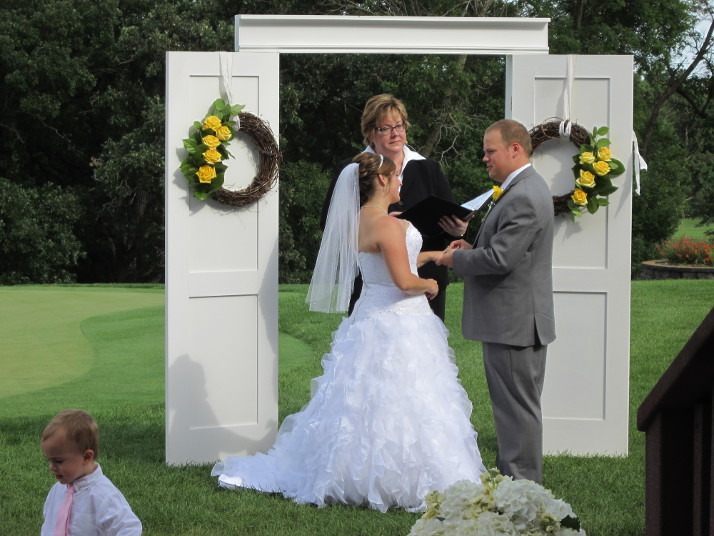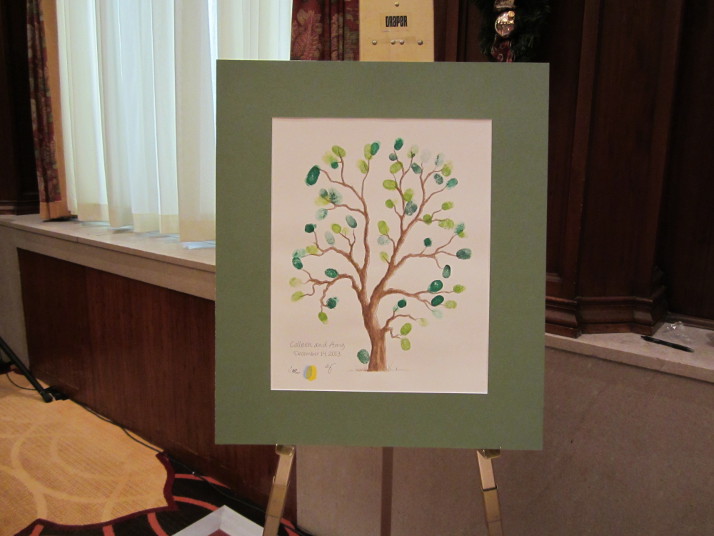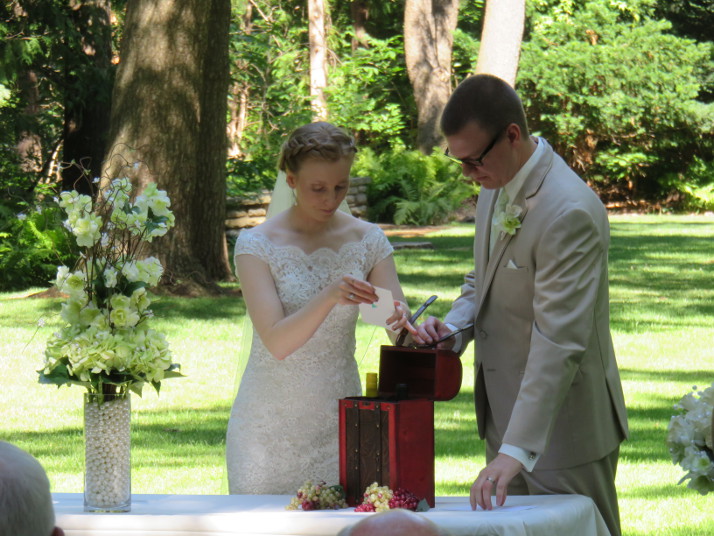Envision Your Wedding Ceremony
It can be a challenge as an engaged couple to envision your wedding ceremony in detail. You know your date, you know your venue, you know you’re going to have a ceremony, but what will that include and how will you make is special and memorable? Couples I work with are seeking a secular or non-religious ceremony, but want it to be appropriately significant and to mark this important step in life.
Occasionally I’ll meet with a couple who already knows many of the things they want in their ceremony, and I’m happy to work with them to include those elements. But most often couples tell me they have little idea where to start or what to include. Since we aren’t bound by religious requirements the simple answer is that anything is possible, but that isn’t a particularly helpful answer. That’s why I come to each initial meeting with a couple prepared with lists and pictures and ideas and experiences.

Using those resources we can quickly determine what is important to you as a couple, and what you want to spend time on during your ceremony. We can also set a target length for your ceremony, and explore many options and possibilities to reflect your personalities and priorities. During our discussion you can begin to envision your wedding ceremony in a more concrete way – you understand the flow, the content and the feelings evoked.
Being able to envision your wedding ceremony will help it feel more real, and can relieve the stress of the unknown. And it will become even more real to you when I provide the first draft of your ceremony and you can see it come together. Every couple deserves to have a unique and memorable ceremony. Together we can envision your ceremony and then bring it to life.


